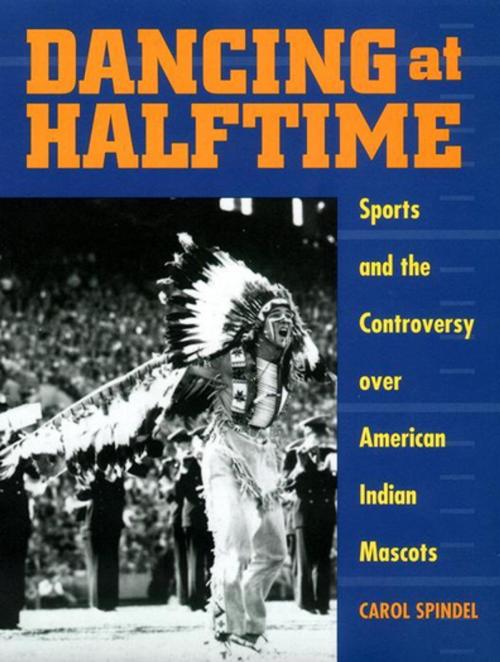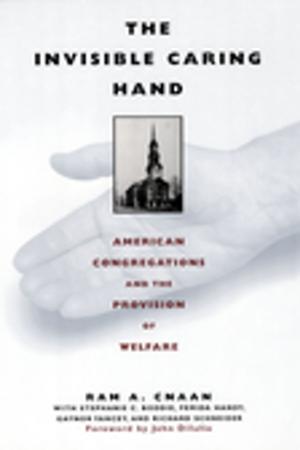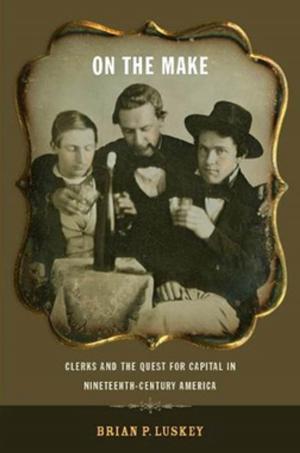Dancing at Halftime
Sports and the Controversy over American Indian Mascots
Nonfiction, Social & Cultural Studies, Social Science, Discrimination & Race Relations| Author: | Carol Spindel | ISBN: | 9780814771105 |
| Publisher: | NYU Press | Publication: | September 1, 2000 |
| Imprint: | NYU Press | Language: | English |
| Author: | Carol Spindel |
| ISBN: | 9780814771105 |
| Publisher: | NYU Press |
| Publication: | September 1, 2000 |
| Imprint: | NYU Press |
| Language: | English |
Sports fans love to don paint and feathers to cheer on the Washington Redskins and the Cleveland Indians, the Atlanta Braves, the Florida State Seminoles, and the Warriors and Chiefs of their hometown high schools. But outside the stadiums, American Indians aren't cheering--they're yelling racism.
School boards and colleges are bombarded with emotional demands from both sides, while professional teams find themselves in court defending the right to trademark their Indian names and logos. In the face of opposition by a national anti-mascot movement, why are fans so determined to retain the fictional chiefs who plant flaming spears and dance on the fifty-yard line?
To answer this question, Dancing at Halftime takes the reader on a journey through the American imagination where our thinking about American Indians has been, and is still being, shaped. Dancing at Halftime is the story of Carol Spindel's determination to understand why her adopted town is so passionately attached to Chief Illiniwek, the American Indian mascot of the University of Illinois. She rummages through our national attic, holding dusty souvenirs from world's fairs and wild west shows, Edward Curtis photographs, Boy Scout handbooks, and faded football programs up to the light. Outside stadiums, while American Indian Movement protestors burn effigies, she listens to both activists and the fans who resent their attacks. Inside hearing rooms and high schools, she poses questions to linguists, lawyers, and university alumni.
A work of both persuasion and compassion, Dancing at Halftime reminds us that in America, where Pontiac is a car and Tecumseh a summer camp, Indians are often our symbolic servants, functioning as mascots and metaphors that express our longings to become "native" Americans, and to feel at home in our own land.
Sports fans love to don paint and feathers to cheer on the Washington Redskins and the Cleveland Indians, the Atlanta Braves, the Florida State Seminoles, and the Warriors and Chiefs of their hometown high schools. But outside the stadiums, American Indians aren't cheering--they're yelling racism.
School boards and colleges are bombarded with emotional demands from both sides, while professional teams find themselves in court defending the right to trademark their Indian names and logos. In the face of opposition by a national anti-mascot movement, why are fans so determined to retain the fictional chiefs who plant flaming spears and dance on the fifty-yard line?
To answer this question, Dancing at Halftime takes the reader on a journey through the American imagination where our thinking about American Indians has been, and is still being, shaped. Dancing at Halftime is the story of Carol Spindel's determination to understand why her adopted town is so passionately attached to Chief Illiniwek, the American Indian mascot of the University of Illinois. She rummages through our national attic, holding dusty souvenirs from world's fairs and wild west shows, Edward Curtis photographs, Boy Scout handbooks, and faded football programs up to the light. Outside stadiums, while American Indian Movement protestors burn effigies, she listens to both activists and the fans who resent their attacks. Inside hearing rooms and high schools, she poses questions to linguists, lawyers, and university alumni.
A work of both persuasion and compassion, Dancing at Halftime reminds us that in America, where Pontiac is a car and Tecumseh a summer camp, Indians are often our symbolic servants, functioning as mascots and metaphors that express our longings to become "native" Americans, and to feel at home in our own land.















